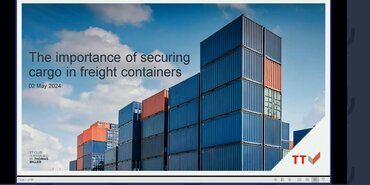Reducing the Risk of Fire Onboard Containerships Through Proper Cargo Handling
Fires onboard large container vessels have unfortunately become increasingly common in recent years, often resulting in loss of life and tremendous economic impacts. This article summarises key recommendations from industry experts on improving cargo handling practices to help reduce the risk of catastrophic shipboard fires.
Causes of Misdeclared and Undeclared Dangerous Goods
A major contributing factor in many containership fires is the presence of misdeclared or undeclared dangerous goods. According to risk management director Peregrine Storrs-Fox of TT Club, approximately 10% of containerised cargo is properly declared as dangerous goods, with an estimated additional 5% being misdeclared either through ignorance or intentionally.
The root causes of misdeclaration stem from the complexity of regulations like the IMDG Code, differing classification systems, disconnects between shipping documentation, and varying interests that may downplay hazards. While guidance documents can help explain regulations, scientific expertise is critical and all supply chain actors must take responsibility for proper evaluation, classification, and communication of hazards.
Recommendations for Improving Cargo Handling
There are several key ways carriers and shippers can work to improve cargo handling:
- Enhanced due diligence on customers, including manufacturers and indirect customers
- Utilising cargo screening tools and data validation to identify misdeclared dangerous goods
- Inspections and audits for high-risk commodities
- Industry information sharing on high-risk shippers while respecting legal constraints
- Consistent enforcement of penalties for intentional misdeclaration
- Driver awareness campaigns on consequences of misdeclaration
- Emerging technologies like IoT monitoring and container scanning
Risk-Based Stowage Principles
Maersk's Uffe Ernst Fredriksen introduced a risk-based stowage concept focused on protecting crew accommodation, machinery spaces, and ship integrity. It designates higher risk dangerous goods to be stowed furthest from accommodation and engine rooms. A collaborative industry white paper details considerations for adapting this approach across different ship types.
While accepting cargo in compliance with regulations is crucial, Maersk also emphasises the need for close engagement with shippers of sensitive cargoes and potential audits of manufacturers. Consistent container inspection protocols and sharing of shipper risk information between carriers could significantly enhance safety.
Conclusion
Preventing container ship fires requires a collaborative effort across regulators, carriers, terminals, and shippers to enable proper declaration and handling of dangerous goods. Technologies and stowage principles are useful tools, but must be augmented by transparency, enforcement, and shared vigilance against complacency. Ongoing engagement and communication among all stakeholders is key to driving continued improvement.
Documents
TT and PI Club ship fire series - webinar 1 - slide deck (2.43 MB) 14/01/2021
Book it right and pack it tight - amendment 39 18 (8.06 MB) 24/06/2020
CTU Code: A Quick Guide - 2022 update (2.03 MB) 19/08/2022
CINS-DG-Stowage-Considerations-Final (261 kB) 22/11/2019
- Author
- Staff Author
- Date
- 13/01/2021





